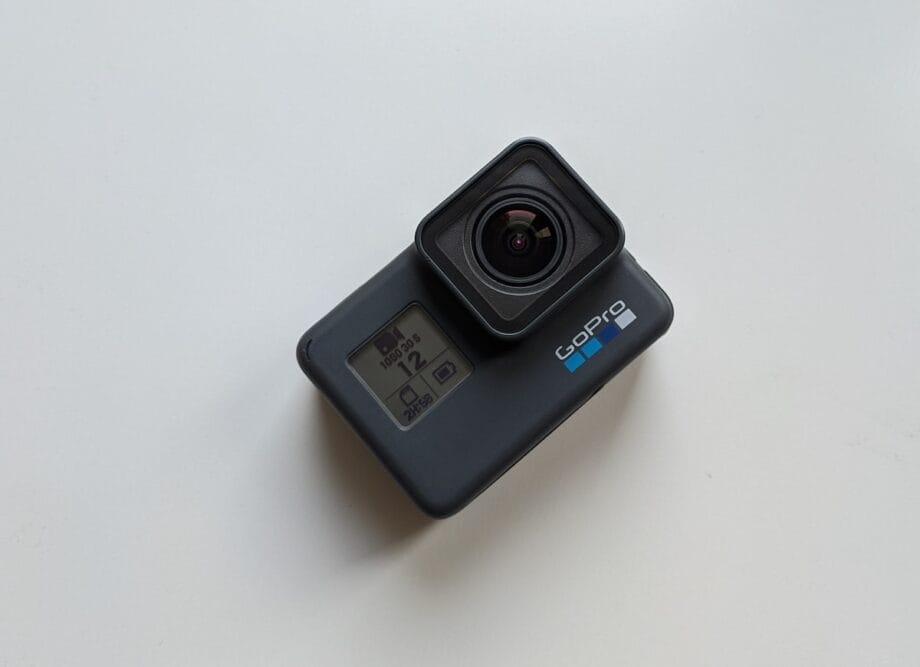On September 23, 2025, the action camera market experienced a noteworthy upheaval with the global unveiling of the DJI Osmo Nano. This remarkably compact and modular action camera, tipping the scales at a mere 52 grams, aims to elevate standards for portable, professional-grade video recording.
Its introduction marks a resurgence in miniaturization techniques coupled with high-end functionalities, potentially igniting fierce competition while broadening horizons for content creators across diverse sectors.
The immediate ramifications are unmistakable: content creators, thrill-seekers, and everyday users now possess access to a device that harmonizes extreme portability with exceptional imaging prowess.
The launch of the Osmo Nano, emanating from leading firm DJI, signifies more than just a product debut; it’s a strategic initiative that may compel rivals to expedite innovation, thus influencing market shares and investment trajectories within the consumer electronics and imaging domains.
The Osmo Nano: Power in a Pocket-Sized Package
The DJI Osmo Nano epitomizes engineering brilliance, delivering capabilities that far surpass its modest dimensions. Weighing only 52 grams and measuring approximately 57 x 29 x 28 millimeters, it is crafted for effortless, hands-free recording, boasting a dual-sided magnetic mount to facilitate secure attachment to various surfaces and accessories.
This modularity, echoing DJI’s previous Action 2 model, serves as a key differentiator, enabling the camera to function independently or in conjunction with a Multifunctional Vision Dock.
At the heart of its professional allure are its advanced imaging capabilities: the Osmo Nano captures breathtaking 4K video at rates up to 120 frames per second (fps) for dramatic slow-motion shots, and 4K at 60fps for crystal-clear, fluid footage.
Notably, it supports 10-bit D-Log M color, providing over a billion colors and a 72% broader color spectrum compared to conventional 8-bit video. This feature grants unparalleled flexibility for post-production color grading—a true asset for dedicated content creators. Underpinning its performance is a cutting-edge 1/1.3-inch CMOS image sensor, which contributes to an impressive 13.5 stops of dynamic range.
Coupled with DJI’s RockSteady 3.0 and HorizonBalancing stabilization technologies, the Osmo Nano promises exceptionally stable and level footage, even in high-motion scenarios. The Vision Dock enhances functionality with an OLED HD touchscreen for live viewing and control, extending battery life, and incorporating a microSD card slot.
The lead-up to this moment was underscored by an escalating demand for compact, high-quality cameras, particularly for point-of-view and social media content.
While DJI has long dominated the drones and gimbals market, its re-entry into the ultra-compact action camera arena with such a feature-rich device positions it as a formidable contender against entrenched brands.
The product’s global availability, albeit with some localized distribution nuances in the United States, is set to ensure its immediate market impact.
Market Dynamics: Winners, Losers, and Strategic Shifts
The launch of the DJI Osmo Nano is bound to ripple through financial markets, particularly impacting companies entrenched in the action camera and broader consumer electronics sectors.
DJI emerges as an obvious beneficiary. Though a privately held entity, the success of the Osmo Nano could significantly enhance its market share within the action camera category, further solidifying its reputation for groundbreaking imaging technology.
Increased sales may yield higher revenues and foster greater investment in research and development, empowering DJI to expand its product ecosystem and sustain its competitive edge. The Osmo Nano also diversifies DJI’s offerings beyond drones, tapping into the flourishing creator economy.
On the opposite end, publicly traded rivals like GoPro (NASDAQ: GPRO) confront a heightened challenge. The Osmo Nano stands in direct competition with GoPro’s compact models, such as the GoPro Lit Hero and Hero 11 Black Mini.
While GoPro boasts a robust brand heritage, the Osmo Nano’s competitive pricing, along with its 10-bit D-Log M and 4K120 capabilities, may pressure GoPro’s sales and profitability, potentially influencing its stock performance.
GoPro may find itself necessitating accelerated innovation cycles, a sharper focus on distinctive selling propositions, or even strategic pricing revisions to uphold its market standing. Other electronics giants with imaging divisions, such as Sony (NYSE: SONY), may also feel indirect pressure as performance expectations for compact cameras rise, even as they primarily target divergent market segments.
Furthermore, firms supplying components to action camera manufacturers, such as Ambarella (NASDAQ: AMBA) for image processing chips and Qualcomm (NASDAQ: QCOM) for connectivity solutions, could experience fluctuating demand based on brand performance in market shares. A successful Osmo Nano could mean an uptick in orders for DJI’s component suppliers, while potentially diminishing orders for those more closely aligned with competitors.
Wider Significance: A New Era for Content Creation
The launch of the DJI Osmo Nano transcends mere product release; it signifies a crucial juncture in mounting industry trends, particularly the fusion of professional-grade features with extreme portability.
This occasion accentuates the surging demand for high-quality, adaptable tools for content creation, propelled by the rise of social media platforms and individual creators.
The prevailing trend toward miniaturization in consumer electronics is further reaffirmed by the Osmo Nano. Consumers increasingly seek potent devices that seamlessly blend into their daily lives or extreme pursuits. The camera’s 10-bit D-Log M capacity, housed in such a compact form, challenges traditional notions of action camera capabilities, merging amateur and professional equipment considerations.
This evolution is likely to inspire other manufacturers to incorporate similar advanced color profiles and high frame rates within their compact offerings. The modular design also suggests a significant ripple effect, potentially prompting accessory developers to innovate new mounts, power solutions, and protective gear tailored to these adaptable systems.
Social media platforms like TikTok and Instagram, thriving on dynamic, high-quality visual content, will inadvertently benefit from users wielding more capable and convenient tools for crafting engaging videos. While direct regulatory or policy implications appear minimal, the increased prevalence of wearable cameras may reignite discourse surrounding privacy and public recording, mirroring past debates regarding dash cams or body cameras.
Historically, the action camera landscape has experienced rapid transformations, from GoPro’s initial supremacy to the emergence of 360-degree cameras and now, a renewed emphasis on ultra-compact, high-fidelity POV devices. The Osmo Nano signifies the next phase in this evolving milieu.
What Comes Next: A Dynamic and Competitive Future
The near future following the DJI Osmo Nano’s launch will likely be defined by intensified competition and swift innovation. In the immediate term, aggressive marketing initiatives from DJI are expected to harness the initial excitement, alongside strategic reactions from rivals.
This may entail pricing adjustments on existing models, expedited development of novel features, or targeted promotions to safeguard market share. The modular framework of the Osmo Nano creates avenues for third-party accessory developers, leading to the emergence of a new ecosystem of compatible mounts, power solutions, and creative tools.
Looking ahead, the long-term potential is immense. We may witness action cameras evolving to integrate AI for intelligent shooting modes, automated editing, and advanced stabilization features. The success of the Osmo Nano’s modularity could encourage the development of more versatile, multi-component camera systems across various brands, enabling users to tailor their configurations to specific needs.
New market opportunities are likely to arise for software developers concentrating on mobile-first video editing and cloud storage solutions, catering to the influx of 4K footage generated by these devices.
Challenges will include sustaining innovation in a swiftly evolving technological landscape, managing supply chain complexities, and navigating potential market saturation as new entrants flood the compact camera segment.
Possible scenarios range from DJI solidifying its dominance in this niche to a more fragmented landscape where several brands cultivate distinctive customer bases through specialized features or competitive pricing.
Wrap-Up: A New Benchmark for Portable Power
The debut of the DJI Osmo Nano marks a watershed moment in the action camera industry, establishing a new standard for what can be achieved within a lightweight, modular form.
Its combination of 4K120 video, 10-bit D-Log M support, and advanced stabilization—all encapsulated in a 52-gram package—positions it as an indispensable tool for both content creators and adventurers.
The immediate repercussions will reverberate across the industry, compelling competitors like GoPro (NASDAQ: GPRO) to reassess their strategies and expedite their innovation processes.

As we navigate forward, the market is poised to become increasingly dynamic and driven by innovation. Investors should remain vigilant regarding sales metrics for the Osmo Nano and its rivals, as these figures will offer insights into shifts in consumer preferences and market dynamics.
Continuous monitoring of technological advancements from key players—particularly in sensor technology, stabilization methodologies, and modular design—will be essential. The enduring legacy of the Osmo Nano may very well hinge on a renewed balancing act between portability and professional performance, fundamentally altering how we document and share our experiences.
Source link: Markets.financialcontent.com.





